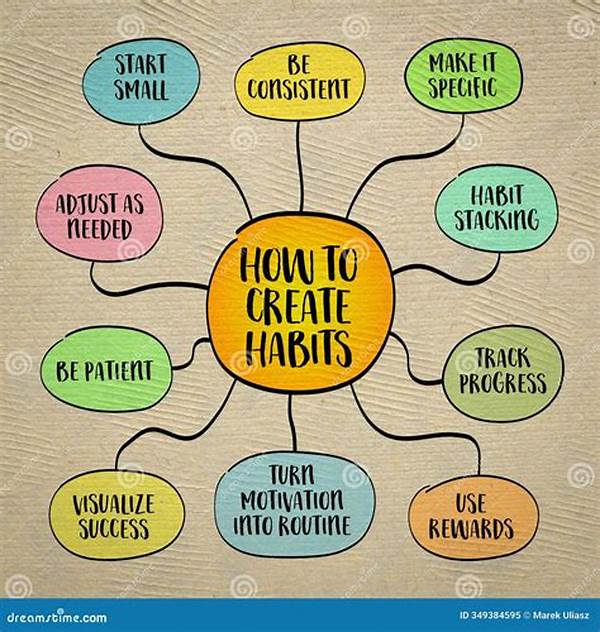- Why Bullet Journaling Works for Professionals
- Discussion: Navigating Professional Life with Bullet Journals
- Examples of Bullet Journaling in Professional Life
- The Purpose of Using Bullet Journals
- Understanding the Bullet Journal’s Appeal
- Nine Illustrations of Bullet Journaling’s Influence
- Describing the Bullet Journal’s Professional Ascendancy
Bullet journaling, a method once relegated to the niche circles of the ultra-organized, has recently grabbed the spotlight among professionals, breathing new life into their work routines. A combination of mindfulness, creativity, and productivity, bullet journaling offers a unique selling point for those who embrace its philosophy. The customizable and flexible nature of bullet journals allows professionals to tailor schedules and tasks to their specific needs, accounting for the rise of bullet journaling among professionals. Gone are the days of monotonous planners; the bullet journal is a canvas for innovation and efficiency, appealing to those craving both order and individuality.
Read More : The Psychology Of Writing Your Goals Down
In today’s fast-paced, digital-centric working environments, bullet journaling is a refreshing counterbalance. Many professionals face the challenge of juggling multiple tasks and deadlines. Where digital planners sometimes distance us from our responsibilities, bullet journaling—through its tangible paper-and-pen approach—ensures an in-depth interaction with our schedules, giving each task the attention it deserves. This intimacy fosters a deeper sense of commitment and accountability, driving productivity and ensuring nothing important slips through the cracks.
But the appeal doesn’t stop at organization. The creative aspect of bullet journaling has inspired an entire community. Instagram is flooded with artistic spreads from professionals who find joy in combining functionality with creativity. This personalized planning system encourages self-expression and a mental clarity that’s rare in other organizational tools, explaining the rise of bullet journaling among professionals. It’s more than a task manager; it’s a testament to a professional’s personality and aspirations.
Why Bullet Journaling Works for Professionals
The beauty of bullet journaling lies in its adaptability. Professionals from various fields testify to its effectiveness in project management. Maria, a marketing executive, says, “Bullet journaling allows me to visualize entire campaigns at a glance.” This system efficiently tracks progress while highlighting key events and meetings. Additionally, the rise of bullet journaling among professionals stems from the community it creates—one that encourages sharing diverse layouts and strategies, resulting in an abundance of inspiration and support.
Discussion: Navigating Professional Life with Bullet Journals
In every office corner and at every conference table, there seems to be a rising trend that cannot go unnoticed: the rise of bullet journaling among professionals. This isn’t just a fad or a fleeting Pinterest inspiration. It’s a disciplined practice that professionals are swearing by. As this phenomenon expands, it merits a closer examination to understand its widespread adoption.
The first thing to note is the sheer versatility that bullet journals offer. They aren’t your conventional planners with preset sections and limited scope for creativity. Professionals are finding solace in designing diaries that align with their unique job needs. Whether it’s a designer planning out their creative spreads, or an engineer mapping out project timelines, bullet journaling caters to all, explaining its rise among diverse professional fields. The method’s flexibility is indeed its strongest suit, allowing for the integration of personal and professional goals, helping users strike a perfect work-life balance.
Another compelling dimension of bullet journaling is its positive psychological impact. It’s a practice grounded in mindfulness, promoting an introspective look at one’s daily, weekly, and monthly goals. This process can significantly alleviate stress, resulting in a more focused approach to tasks. Professionals report improved mental clarity and increased productivity as outcomes of consistent journaling. The ability to pen down thoughts, aspirations, and tasks creates a sense of control in an otherwise chaotic work life. The rise of bullet journaling among professionals is not merely about organization; it’s a tool for mental well-being.
It’s also worth mentioning the community aspect bullet journaling has fostered. In digital spaces, professionals from all around the globe are engaging, sharing their journal layouts, tips, and tricks. This sense of community is invaluable. It connects like-minded individuals, fostering a supportive environment where one can gain and provide insights. The rise of bullet journaling among professionals can be partially attributed to this unity, as it has become more than just a solitary activity—it’s a collaborative, collective effort of growth and achievement.
The Benefits Outweigh the Time Invested
Critics argue that bullet journaling is time-consuming. However, when considering the productivity boost, stress relief, and creative outlet it provides, one could argue that the benefits outweigh the initial time investment. Returning to that tangible sense of accomplishment when ticking a task off the list is something digital checks just cannot replicate.
Examples of Bullet Journaling in Professional Life
The Purpose of Using Bullet Journals
Bullet journaling has grown not only as a tool for personal organization but as a holistic approach to managing professional life. The primary purpose is to offer a flexible planning system where professionals can tailor every aspect to fit the specifics of their careers, suggesting why there has been such a marked rise in bullet journaling among professionals.
Secondly, the creative nature of bullet journaling cannot be downplayed. Offering a limitless canvas for those who approach their professional lives with the same creativity as their personal lives, bullet journals serve as both an artistic and strategic space. The art of setting pages, choosing themes, and even the personalization of trivial elements like icons turns planning into a pleasurable experience rather than a mundane task.
Lastly, there’s a profound emotional aspect tied to bullet journaling. At the core, it involves introspection. The tactile act of writing creates a bond between thoughts and actions that taps directly into emotional processing, making the user more connected and aware of their goals and progress. Ultimately, bullet journaling supports not just professional progress but personal growth, heralding its ascent among professionals.
Understanding the Bullet Journal’s Appeal
In the corporate hustle, where time is of the essence, the allure of bullet journaling emerges unmistakably. Professionals are constantly on the lookout for methodologies that infuse their workday with efficiency and creativity. Bullet journaling stands out as a creative oasis amidst a sea of monotonous monotasks. It potentially harnesses creativity and adds a personal touch to project management, a quality absent in rigid calendaring apps.
The framework developed by Ryder Carroll, which enthusiasts fondly refer to as “the BuJo method,” serves as a blank canvas where professionals can inject their creativity, experience self-expression, and tailor their plans to their hearts’ content. With the added bonus of mood trackers, habit logs, and personal reflections, bullet journaling delivers a comprehensive pallet for managing the facets of one’s professional life effectively.
The Artistic and Strategic Blend
Bullet journaling, unlike its digital counterparts, invites professionals to take a break from screens, a much-needed respite from digital overload. Moreover, the ritual-like process fosters mindfulness—a state of reflective awareness—paired with execution beyond mere plans. As the rise of bullet journaling among professionals continues, the emphasis is placed not just on productivity but also on crafting one’s legacy of creativity and efficiency.
Nine Illustrations of Bullet Journaling’s Influence
Describing the Bullet Journal’s Professional Ascendancy
In the bustling corridors of global corporate offices, the rise of bullet journaling among professionals is more than just a whispering trend—it’s a revolution against the static tide of traditional planners. One day at a time, professionals are returning to the serenading scratch of pen on paper, integrating their ambitions with the tactile reassurance of ink.
This practice has burgeoned into a dynamic outlet where work agendas morph into vibrant manifestations of personal identity. The journals are a synthesis of tasks, dreams, ideations, evoking the spirit of individuality. For many, it mirrors a work-life canvas, bridging gaps between daily minutiae and overarching professional endeavors. It stands as a testament to professionals weaving ingenuity with practicality.
Reflecting on its innate ability to galvanize productivity, bullet journaling fills more than the empty pages—it fills voids left by disjointed organizational tools. Professionals find themselves enveloped in an ecosystem that allows for a harmonious focus on present tasks while aligning future aspirations. This method empowers them to venture beyond mere lists, creating living documents that iterate and grow, just as they do in their professions.
The rise of bullet journaling among professionals highlights a cultural shift toward mindful, intentional living. Moving away from the depersonalized digital realm, there’s a return to authenticity, to making daily affirmations and mapping out paths with deliberation and intent. As this journey continues, one pencil stroke at a time, it broadens horizons, assuring every professional that their trajectory is as dynamic and colorful as their journal entries.



